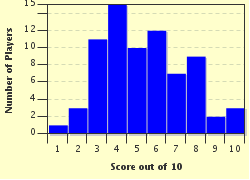Quiz Answer Key and Fun Facts
1. In ancient times, the Valley of the Kings was located on the west bank of the Nile, across from the ancient capital of Thebes in Egypt. What is Thebes called today?
2. Which of the following statements explains the ancient significance of the location of the Valley of the Kings on the west bank of the Nile?
3. The Valley of the Kings was used as a burial ground after the expulsion of the Hyksos invaders from Egypt. This occurred during which historical period in ancient Egyptian history?
4. An archaeologist working in the Valley of the Kings would NOT expect to find a tomb belonging to which of the following?
5. Which of the following describes a problem encountered by the ancients while constructing tombs in the Valley of the Kings?
6. The layout of the earliest tombs in the Valley of the Kings consisted of long corridors that would turn at least once at a ninety degree angle. What is this type of layout called?
7. Which pharaoh's tomb in the Valley of the Kings was mostly intact when discovered?
8. Tombs in the Valley of the Kings are assigned numbers that are based on the order of discovery. The tomb called KV5 belonged to the sons of which great pharaoh, who lived to be an estimated 93 years old?
9. During a period of decline in ancient Egypt, priests moved many of the mummies to which area that also contained Hatshepsut's mortuary temple?
10. By 2010, approximately how many tombs had been numbered in the Valley of the Kings?
Source: Author
ponycargirl
This quiz was reviewed by FunTrivia editor
bloomsby before going online.
Any errors found in FunTrivia content are routinely corrected through our feedback system.


